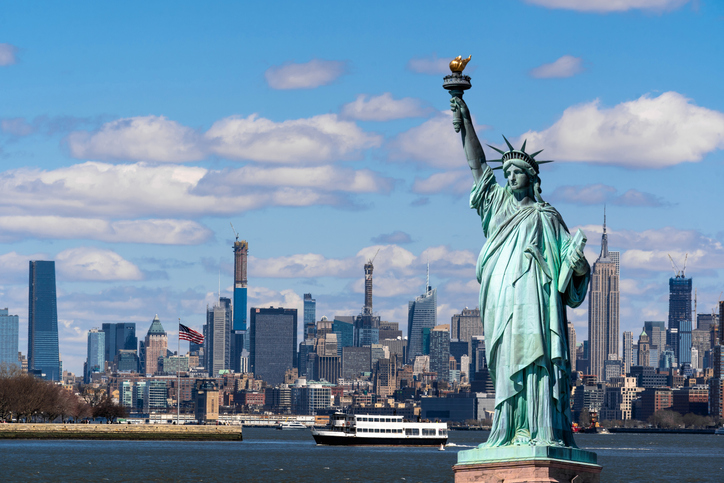In the mid-summer run-up to New York’s third Labor Day since the economy-crushing pandemic shutdown of 2020, the state’s private employment recovery remained among the weakest in the nation.
Measured on a seasonally adjusted basis, private employment in New York State as of July was still 90,700 jobs short of its February 2020 pre-pandemic peak (-1.2 percent), while the total U.S. private jobs count was up roughly 4 million jobs (+3.2 percent), according to data from the state Labor Department and the U.S. Bureau of Labor Statistics (BLS). If the Empire State had matched the nationwide trend during this period, it would have had 357,000 more private-sector jobs in July.
As mapped below, private job counts as of July exceeded pre-pandemic levels in 38 states, including neighboring New Jersey (+3.5 percent), Pennsylvania (+1.3 percent), and Massachusetts (+0.8 percent). Only seven states have experienced weaker employment recoveries since early 2020—and in several of those cases, slow job growth was due largely to factors other than the pandemic, such as severe hurricanes in Louisiana and falling shale oil production in North Dakota. By contrast, private sector employment has grown much faster in New York’s large peer states: Florida (+8.6 percent), Texas (+8.5 percent), and even California (+3.0 percent).
Regional breakdowns
Not counting interstate regions, the BLS keeps track of monthly non-seasonally adjusted employment for 375 metropolitan statistical areas (MSAs) and metropolitan divisions throughout the country. According to the latest BLS data, July private job counts had moved above the 2019 level in 287 of these metro areas, with a median gain of 3.4 percent over the three-year period.
Private employment in New York City, the epicenter of the Western Hemisphere’s COVID-19 outbreak in early 2020, as of July had more than recovered—to a level 59,000 jobs (1.5 percent) above its July 2019 total. But this was only good enough to rank 242 out of 375 U.S. metro areas, as shown below.
When it comes to post-pandemic job recovery, most of New York is trailing far below the national average, ranking among the worst-performing areas in the entire country. Nearest the bottom are several upstate MSAs that were already struggling for years before the pandemic: Elmira, Utica-Rome, and Binghamton. Upstate’s non-metropolitan rural counties were even further behind—still down 23,200 jobs, or 6.3 percent, from pre-pandemic employment levels.
Among upstate’s larger MSAs, Buffalo-Cheektowaga-Niagara Falls and Rochester are furthest from full recovery, while Albany-Schenectady-Troy (home of our state government) had finally moved very slightly above its July 2019 job count. Upstate New York’s lone outlier on the positive side was the tiny Ithaca area.
Unemployment rates
The Empire State as a whole continued to move in line with national measures of unemployment, as counted by the monthly household survey.
Using this measure, however, the regional differential was reversed, with higher unemployment rate estimated for New York City (despite its more-improved jobs count) than for the rest of the state, as shown below.
The likely explanation: while the New York City job count is up, there are also more city residents still looking for work (and willing to work), while the labor force in the rest of the state hasn’t grown as fast.
A murky future
August estimates won’t be released for another few weeks, but if the state as a whole continued to add jobs at its most recent seasonally adjusted monthly pace, New York finally reached or exceeded its February 2020 employment level roughly around Labor Day. Full recovery is further away in much of upstate, however.
Originally published by the Empire Center. Republished with permission.
For more from Budget & Tax News.
For more public policy from The Heartland Institute.
